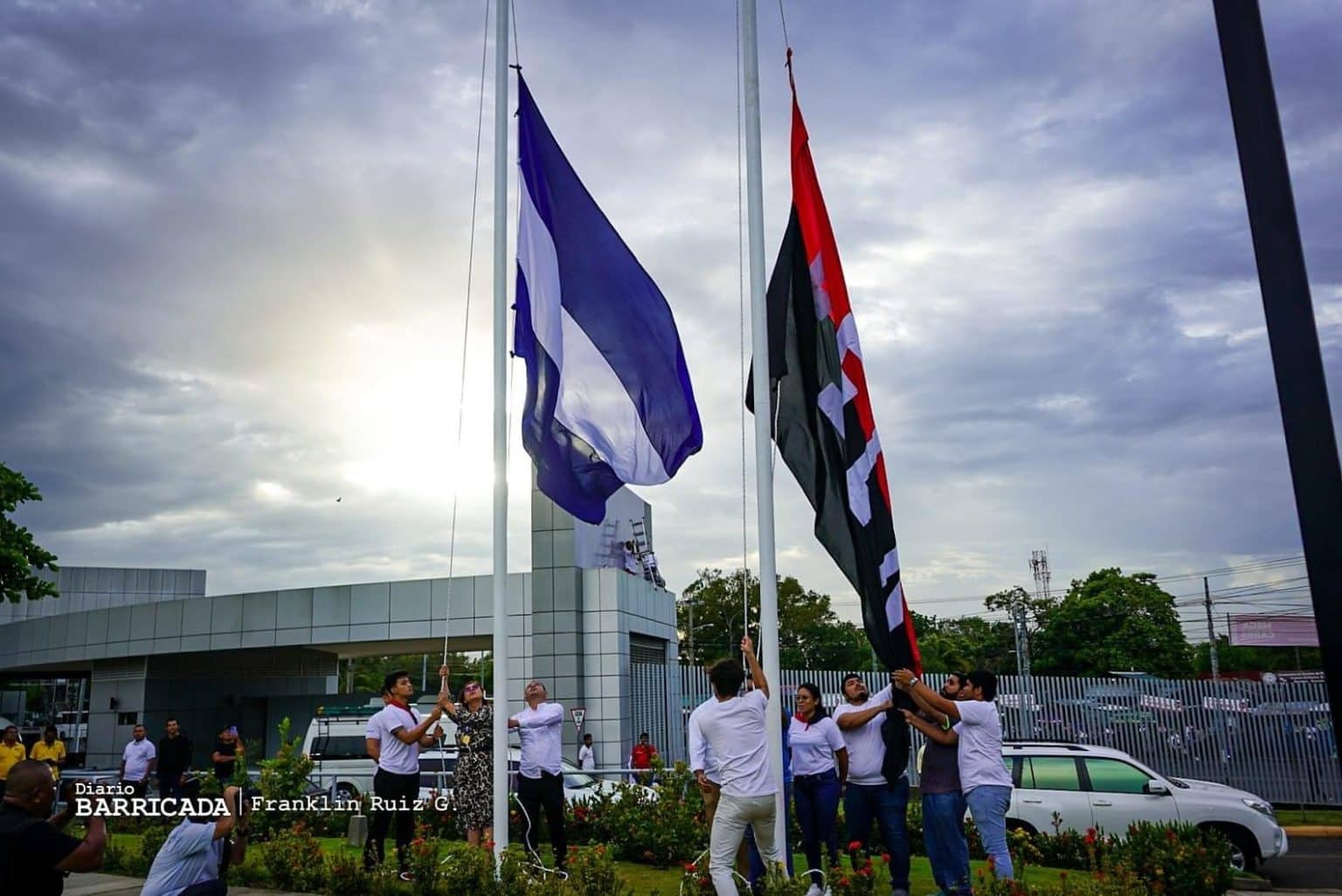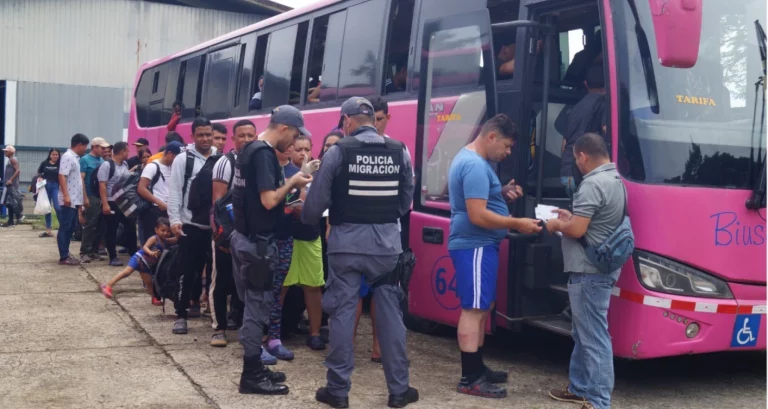29 de octubre 2023

European Concern over Lack of Academic Freedom in Nicaragua

PUBLICIDAD 1M
PUBLICIDAD 4D
PUBLICIDAD 5D
At the Nicaraguan border, each traveler must pay immigration officials 150 US dollars for “safe conduct” to pass through the country without problems

Migrantes son trasladados a la frontera nicaragüense para seguir su camino a Estados Unidos. Foto: Cortesía
More than 14,000 migrants who crossed the Darien jungle —which separates Colombia from Panama— were moved to the Nicaraguan border of Penas Blancas between October 10 and 16, 2023, according to data from Costa Rica’s General Directorate of Migration and Aliens.
The move is part of the “humanitarian corridor” plan implemented by the governments of Panama and Costa Rica in an attempt to control the high migratory flow in the border area of both countries, known as Paso Canoas.
After crossing the Darien Gap, citizens are moved in buses from Panama to a Temporary Migrant Attention Center (CATEM) in Costa Rica. In this way, migrants are prevented from staying in Paso Canoas.
At CATEM, they are provided medical attention, food, and the trip to the Nicaraguan border is coordinated.
Upon arrival at the Nicaraguan border, each migrant must pay the immigration office 150 dollars for “safe conduct” to transit the country without problems. However, migrants have complained that some officers pocket the money and do not give them the document.
Panama’s Ministry of Public Safety revealed that, by October 21, some 20,889 migrants had been moved to CATEM. Of these, 14,000 have already been officially moved to Penas Blancas. However, of the remaining 6,889, there is no information from the Panamanian or Costa Rican governments.
“The idea of granting this migratory transport has been excellent, more humanitarian, with more protection for the migrants and less impact for our society,” says Juan Manuel Pino, Panamanian Minister of Public Safety.
These measures prevent migrants from being stranded in the Paso Canoas border zone. In recent months, this place has become a “hell” for many migrants who do not have the money to continue their journey to the northern border.
According to press reports, every day, some 500 to 600 people sleep on cardboard or in tents until they can pay for a ticket. There are cases of migrants who have waited up to a month.
According to official data, most migrants crossing the Darien come from Venezuela, Ecuador, Haiti, China, and Colombia.
Migrants who were taken to the Temporary Migrant Attention Center, located in Costa Rica. Video: Courtesy.
The presidents of Costa Rica and Panama provided a fleet of up to 200 buses to transport migrants to the Nicaraguan border to implement this plan.
However, the number of buses is established daily depending on the number of migrants in Panama’s migratory stations, according to Costa Rican authorities.
The transfer of migrants from CATEM is not free to all. According to the governments of these countries, migrants must pay 30 dollars to be taken to the Nicaraguan border. However, the fare for those who cannot afford it is paid with public funds and money raised from the internationally.
“The authorities are assessing the situation of people who can’t pay with money from international organizations during their stay (in the CATEM),” said Costa Rican Immigration in a press release.
The institution emphasized that migrants taken to CATEM “cannot go out to carry out any paid activity since their passage through the country is only in transit.”
Although this Panamanian / Costa Rican humanitarian project is now in its third week of implementation, the Nicaraguan government has not made any statement on the matter.
In the document “Plan of Attention to Migratory Flows,” published on October 19, the Ortega government limited itself to “blaming” international sanctions for the increase in the migration of Nicaraguans to the United States. It did not offer any solution to the problem, nor did it refer to Nicaragua being used as a “trampoline” by migrants from Cuba and Haiti.
Migration from all nationalities to the United States has increased in the last two years. In fiscal year 2021, there were 1.9 million irregular migrants apprehended at the southern US border; in 2022, it rose to 2.7 million, and this year there are 3.2 million.
Nicaragua is one of the countries through which thousands of migrants pass. Data from the Central Bank of Nicaragua, analyzed by the newspaper La Prensa, showed that some 50,800 people who arrived by plane to the country did not leave by that route, suggesting that they were migrants who continued their journey by land.
There is no data on how many foreigners entered Nicaragua through the southern border. The Nicaraguan Institute of Tourism (INTUR), which has the statistics on foreign entries, has not published its yearbook since 2021, when migration measures for Cubans were relaxed.
Honduras, another transit country, reported on Wednesday that between January 1 and October 22, a total of 416,438 migrants entered the Central American country irregularly. This record number doubles the number of foreigners that entered Honduras in 2022 and signals the migratory crisis in the Americas.
This article was originally published in Spanish in Confidencial and translated by Havana Times.
PUBLICIDAD 3M
Confidencial es un diario digital nicaragüense, de formato multimedia, fundado por Carlos F. Chamorro en junio de 1996. Inició como un semanario impreso y hoy es un medio de referencia regional con información, análisis, entrevistas, perfiles, reportajes e investigaciones sobre Nicaragua, informando desde el exilio por la persecución política de la dictadura de Daniel Ortega y Rosario Murillo.
PUBLICIDAD 3D